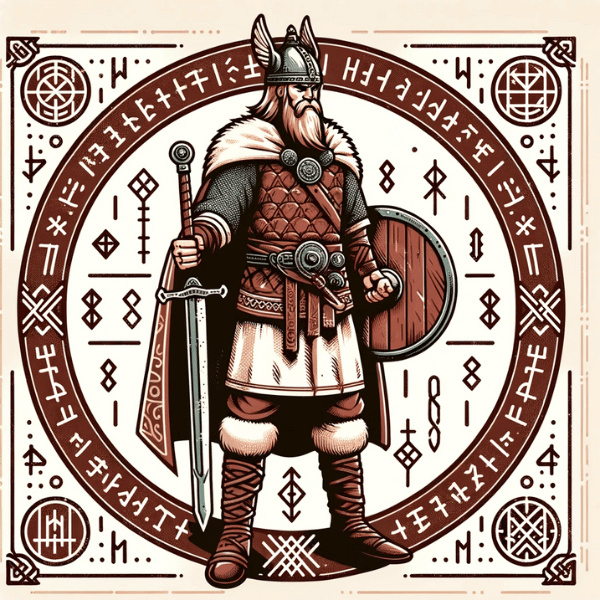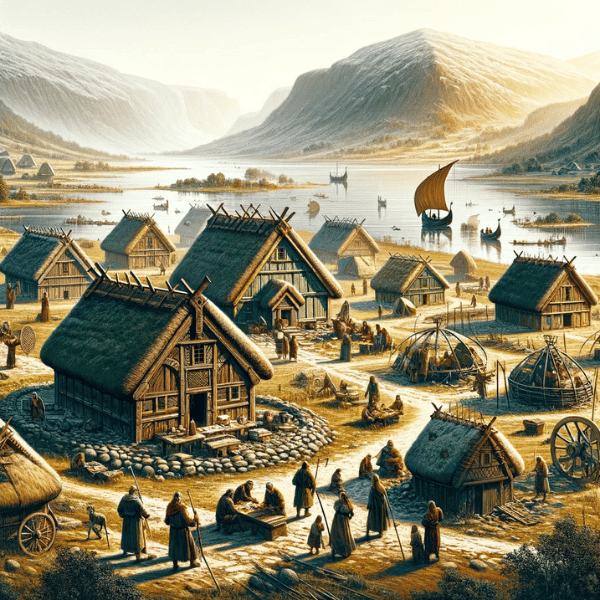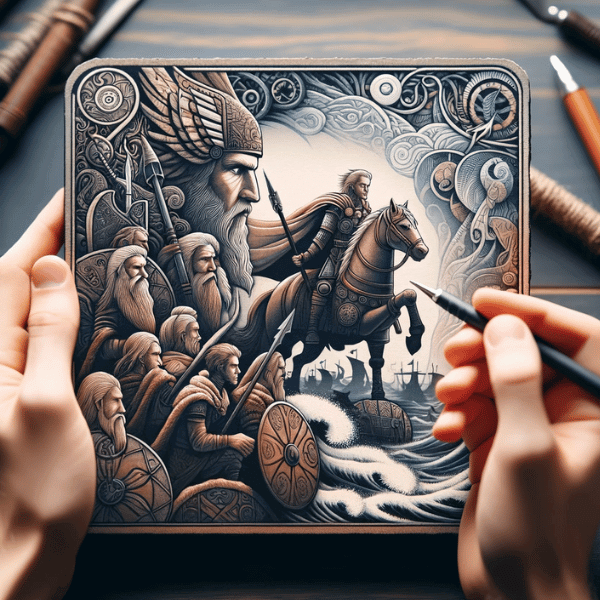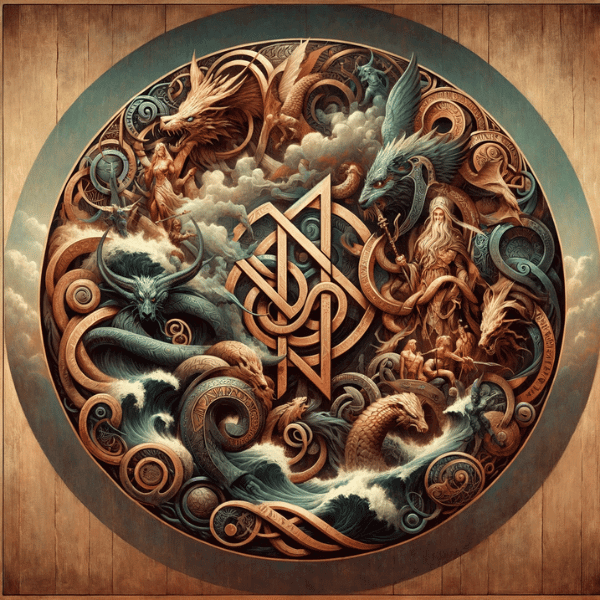Norse mythology, a tapestry of tales rich in heroism, gods, and mystical creatures, forms a crucial part of the cultural heritage of Scandinavia. Among its diverse narratives, the saga of Helgi Hjörvarðsson stands out for its blend of heroic deeds, romance, and supernatural elements. Unlike more commonly discussed figures like Thor or Odin, Helgi Hjörvarðsson’s tale offers a unique glimpse into the values and beliefs of ancient Norse society. This article delves into the life and adventures of Helgi, exploring not just the saga itself but also its historical context, literary significance, and enduring influence. By examining this less-explored hero, we aim to provide fresh insights into the complex and fascinating world of Norse legend.
| Attribute | Helgi Hjörvarðsson Information |
|---|---|
| Origin | Norse Mythology and Icelandic Sagas |
| Heroic Figure | Legendary hero known for his bravery and heroism |
| Sword | Wielded the sword Hrotti, a renowned weapon |
| Love Story | Associated with a tragic love story involving Sigrún |
| Family Legacy | Son of Hjörvarðr, with a heroic lineage |
| Cultural Impact | A central character in Icelandic sagas and poetry, symbolizing heroism and honor |
| Depictions | Featured in various sagas, poems, and legends, known for his heroic exploits |
1. The Legend of Helgi Hjörvarðsson
The Birth and Lineage of Helgi
Helgi Hjörvarðsson’s saga begins with his lineage, a testament to his destined greatness. Born to Hjörvarðr, a mighty king, and a prophetic giantess, Helgi’s birth was marked by omens and predictions. This blend of royal and supernatural heritage set the stage for his extraordinary life, distinguishing him from other Norse heroes who often boasted purely divine or noble bloodlines.

Heroic Deeds and Adventures
Helgi’s life was a tapestry of heroic deeds, each illustrating the valor and principles revered in Norse culture. One of his most notable achievements was avenging his father’s death, a common motif in Norse sagas symbolizing loyalty and honor. His battles were not just physical confrontations but also a reflection of the struggle between order and chaos, a central theme in Norse mythology.
The Love Story with Sváfa
Integral to Helgi’s legend is his love for Sváfa, a valkyrie. This romance added a layer of depth to his character, showcasing a hero capable of both fierce battle and deep love. Their story, entwined with fate and tragedy, echoes the Norse belief in an inescapable destiny, making Helgi’s saga as much a tale of love as it is of heroism.
Comparison with Other Norse Heroes
While parallels can be drawn between Helgi and other Norse heroes like Sigurd or Ragnar Lothbrok, especially in their martial prowess and encounters with the supernatural, Helgi’s narrative stands apart in its integration of romantic and familial elements. This blend offers a more holistic view of Norse heroism, where personal relationships are as crucial as battlefield valor.
2. Historical and Mythological Context of Helgi’s Saga
The Era of Vikings and Sagas
The Helgi saga unfolds during the Viking Age, a period from the late 8th to the early 11th century. This era was marked by Scandinavian seafaring warriors and traders who influenced much of Europe. The setting of Helgi’s story in this time frame provides a window into the lives, beliefs, and societal structures of the Norse people. Sagas like Helgi’s were not just entertainment; they were integral to preserving history, culture, and values in an oral tradition.

Mythological Themes and Motifs
Helgi’s story is replete with themes and motifs that are quintessential to Norse mythology. The presence of valkyries, beings who chose those who may die and those who may live in battles, introduces the concept of predestination, a key element in Norse belief. The intertwining of Helgi’s fate with supernatural elements reflects the Norse view of a universe governed by both visible and invisible forces. Additionally, themes of honor, revenge, and the hero’s journey from birth to death highlight the Norse value system and world view.
3. Literary Analysis of Helgi’s Saga
The Structure of the Saga
The saga of Helgi Hjörvarðsson, like many Norse sagas, follows a distinctive narrative structure that blends historical facts with mythological elements. This narrative style is episodic, focusing on key events in Helgi’s life rather than providing a continuous, detailed biography. The saga’s structure allows for a focus on dramatic moments, particularly those that define Helgi’s character and his place in the Norse heroic tradition.

Stylistic Elements of the Saga
The stylistic elements of Helgi’s saga are characteristic of Norse literary tradition. The use of kennings — metaphorical phrases used in place of simple nouns — enriches the text, providing depth and a layer of interpretative complexity. Dialogues in the saga often feature sharp, concise exchanges, reflective of the Norse cultural value placed on wit and verbal prowess. Furthermore, the saga employs a mixture of prose and verse, with the poetic sections adding a lyrical quality to the storytelling, emphasizing key moments or emotions.
4. Helgi in Norse Mythology and Beyond
Helgi’s Place in Norse Mythology
In the grand tapestry of Norse mythology, Helgi Hjörvarðsson occupies a unique position. While not as widely known as gods like Thor or Odin, Helgi represents the quintessential Norse hero, embodying traits such as bravery, loyalty, and the struggle against fate. His story, interwoven with elements of the supernatural and the human, provides a more comprehensive understanding of Norse heroism, extending beyond the battlefield to include personal sacrifice and love.

Comparative Analysis with Heroes in Other Mythologies
When compared with heroes from other mythological traditions, Helgi presents an interesting study. Similar to Greek heroes like Achilles or Roman figures like Aeneas, Helgi’s story is a blend of divine intervention, personal struggle, and destiny. However, unlike these heroes, whose tales often emphasize individual glory and achievement, Helgi’s saga places equal importance on personal relationships and emotional depth. This aspect offers a distinct perspective on the Norse heroic ideal, which encompasses a broader range of human experience.
5. Modern Interpretations of Helgi’s Saga
Helgi’s Saga in Contemporary Literature and Art
The tale of Helgi Hjörvarðsson, while rooted in ancient Norse mythology, continues to inspire modern literature and art. Contemporary authors and artists often revisit Helgi’s story, drawn to its complex blend of heroism, romance, and destiny. In literature, Helgi’s character has been reimagined in various genres, from fantasy to historical fiction, showcasing his enduring appeal. In visual arts, the dramatic scenes of his saga – battles, encounters with supernatural beings, and tender moments with Sváfa – have been captured in paintings, sculptures, and graphic novels, highlighting the saga’s rich visual potential.

Relevance to Contemporary Themes and Values
The themes present in Helgi’s saga, such as heroism, love, and fate, remain relevant in today’s world. His story resonates with contemporary audiences as it explores universal human experiences and emotions. The saga’s emphasis on personal integrity and resilience in the face of adversity mirrors modern values. Additionally, Helgi’s respectful and empathetic treatment of others, including his enemies, provides a model of ethical conduct and honor that transcends time. In a world grappling with complex moral and social challenges, Helgi’s saga offers insights into enduring virtues and the timeless nature of human struggles.
6. Conclusion
In exploring the saga of Helgi Hjörvarðsson, we uncover a multifaceted hero whose life encapsulates the essence of Norse mythology. From his supernatural birth to his heroic deeds and profound love story, Helgi exemplifies the complexities of Norse heroism, blending valor with emotional depth. His narrative, rich in mythological themes and reflective of the Viking Age’s societal norms, offers invaluable insights into ancient Norse culture and values. Moreover, the enduring influence of Helgi’s story in modern literature and art underscores the timeless appeal of these myths. As we delve into such sagas, the legacy of Norse mythology continues to resonate, revealing universal truths and providing enduring lessons on courage, honor, and the human spirit.
